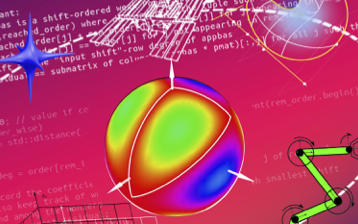Description
Abstract. The simplest examples of integrability in mathematical physics - spectral distributions of fundamental random matrix ensembles or the diagonal spin-spin correlations of the square lattice Ising model - to give just two examples, reveal the importance and practical utility of the six Painlevé equations in our understanding of these models. Few aspects of this understanding escape the presence of these equations, whether it is the application of Riemann-Hilbert methods to the asymptotic limits as matrix ranks or spin separations tend to infinity or the relationships inherited from the affine Weyl group symmetries of the Painlevé equations. This understanding operates in both directions: fundamental understanding of the Painlevé equations provides the most powerful and rigorous tools to characterise a variety of statistics applied to the models, and these applications are driving and motivating a lot of studies into the pure mathematics at the core of these equations. However today we coming up against numerous examples where one can pose questions just outside the simplest models: e.g. the singular value distribution of a product of two Ginibre random matrices, or the diagonal correlations of the triangular Ising model or even the off-diagonal correlations of the square lattice model, and one is beyond the six Painlevé set or even the discrete Sakai scheme. Integrability is still present and some of this territory - the Garnier, Fuji-Suzuki, Sasano and matrix-Painlevé systems - has been sketched out but there are gaps in our understanding and our tool-box is missing critical tools that one needs. In some senses the complexity has grown and it is often impractical to do hand-calculations and when computer-assisted systems are employed our best results so far cannot be analysed by hand. There are hints that simplicity is achievable yet the standard computer assisted algorithms do not find them. So the challenge is to develop some flexible, model-adapted algorithms for doing what are essentially algebraic geometry calculations. A number of examples, including those mentioned previously, will illustrate this state of affairs.

